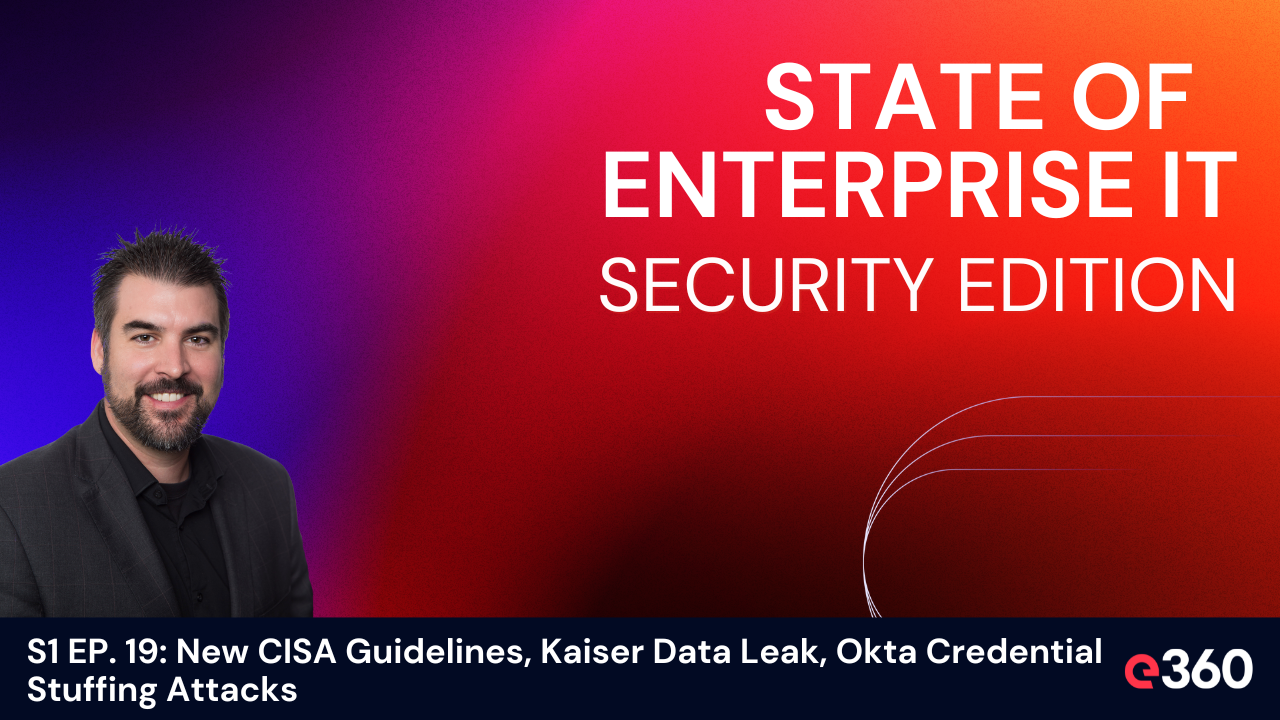By Brad Bussie, CISO, e360
What is Shadow AI?
It's no secret that businesses are embracing AI at an unprecedented pace. AI is no longer just a tool; it’s a game-changer, driving efficiency, innovation, and growth across every department. From marketing teams analyzing massive datasets to HR departments streamlining recruitment, AI is the key to staying ahead of the curve. But with this rapid adoption comes a new challenge that many leaders might not see coming—Shadow AI.
Shadow AI refers to the unsanctioned use of AI tools by employees within an organization, often without the knowledge or approval of IT and security teams. While it’s a testament to the initiative and ingenuity of your workforce, it also opens the door to significant security risks. So, how do you as a tech leader strike a balance between fostering innovation and ensuring robust security?
Understanding the Risks of Shadow AI
Here's a common scenario: your marketing team is using an AI tool like ChatGPT or Claude to generate reports in a fraction of the time it would normally take. They've pasted in performance metrics, revenue information, and even client names. AI then creates an interactive report with insights that help them streamline efforts and report on ROI to the executive team. Everyone is thrilled.
But if this AI tool isn’t properly vetted or controlled, it could be storing or training on sensitive data like your company’s proprietary information. As Brad Bussie pointed out in our recent podcast episode AI is Moving Fast in Business—Security Teams Need to Move Faster, what happens when this AI is queried by one of your competitors? The very tools designed to give you an edge could inadvertently expose your competitive secrets.
Taming Shadow AI
As a tech leader, it’s not just about identifying the problem—it’s about finding actionable solutions. Here are some advanced strategies that can help your organization harness the power of AI while keeping Shadow AI in check:
1. Implement a Secure Access Service Edge (SASE) Framework
One of the most effective ways to manage Shadow AI is by implementing a SASE framework. This technology enables you to monitor and control which AI tools are accessible within your organization’s network. By using SASE, you can create a whitelist of approved AI platforms like Gemini or ChatGPT and block access to unvetted tools. If an employee tries to access an unapproved AI, they receive a prompt requiring IT and security approval. This ensures that only vetted, secure tools are used, without stifling the creativity and efficiency AI brings to your team.
2. Deploy AI Data Gatekeepers
Leverage browser extensions or AI-specific data loss prevention (DLP) tools that act as gatekeepers for your organization’s data. These tools scan any information before it’s sent to an AI platform, identifying and blocking sensitive data like Personally Identifiable Information (PII) or proprietary data. This solution not only prevents accidental data leaks but also allows your teams to work with AI confidently, knowing they’re not compromising security.
3. Establish a Culture of AI Awareness and Education
While technical solutions are essential, they won’t be effective if your team doesn't fully understand and respect AI’s power and risks. Regularly educate your teams about the potential dangers of Shadow AI and the importance of using approved tools. This could include training sessions, internal webinars, or even creating an AI usage policy that outlines the do’s and don’ts. By fostering a culture of awareness, you empower your employees to innovate safely.
4. Integrate AI Governance into Your IT Policies
Your organization’s IT policies should evolve with the technology landscape. Integrate AI governance into your existing IT and data management policies to include guidelines for AI use, data handling, and risk management. This should cover everything from how AI tools are selected and approved to how data is managed and protected when used with these tools.
5. Regularly Audit AI Usage and Data Flows
Finally, consider conducting regular audits of AI usage and data flows within your organization. This involves tracking what AI tools are being used, by whom, and for what purpose. Additionally, monitor how data is being handled and ensure that it aligns with your company’s security standards. Audits can reveal unexpected or unauthorized AI usage, allowing you to address potential risks before they escalate.
Empowering Innovation with Guardrails
AI can be powerful in driving business growth, such as creating interactive dashboards, generating insightful reports, and enabling faster decision-making. But as tech leaders, we must ensure that this power is harnessed securely. Shadow AI doesn’t have to be a looming threat. With the right strategies, you can enable your teams to innovate while protecting your organization from risk.


